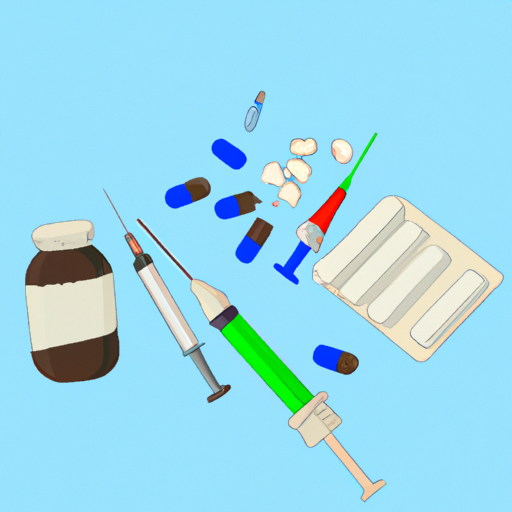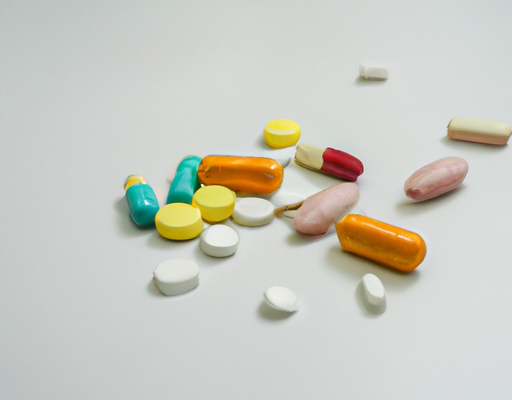Definition of varicose veins
Varicose veins of the scrotum are a common medical condition that can cause significant discomfort and distress. Varicose veins are dilated or enlarged veins that may be visible through the skin and may cause pain, swelling, itching, and other symptoms. The most common cause of varicose veins of the scrotum is a disruption in the normal functioning of the vein valves, which are responsible for allowing blood to flow in one direction. The following steps can help to reduce the risk of developing varicose veins of the scrotum:
- Maintain a healthy weight
- Exercise regularly
- Avoid prolonged sitting or standing
- Wear loose-fitting clothing
- Elevate your legs when resting
Taking preventive measures and following the advice of your doctor can go a long way in reducing the symptoms of varicose veins of the scrotum.
Risk factors
Varicose veins of the scrotum can be a serious medical condition, and risk factors for developing this condition should be taken seriously. While age is one of the most significant risk factors for varicose veins in the scrotum, other factors such as obesity, lifestyle choices, and even genetics are all thought to play a role in the development of the condition. People with a family history of varicose veins are more likely to develop the condition, as are those with a sedentary lifestyle, or those who suffer from other medical conditions such as diabetes, hypertension, or obesity. Additionally, occupations that involve standing for long periods of time can also increase the risk of developing scrotal varicose veins. It is important to consult with a doctor if any of these risk factors exist in order to take preventive measures and to receive early treatment if needed.
Symptoms
Varicose veins of the scrotum, also known as scrotal varices, can cause a variety of symptoms in men. The most common symptom is a feeling of heaviness or aching around the scrotum and testicles. This symptom typically worsens when standing for long periods of time and improves when lying down. Other symptoms may include a visible engorgement of the veins, swelling and redness of the scrotum, and an irregular scrotal shape due to the veins. In some cases, men may experience a dull or throbbing ache in their scrotum and testicles which can become more severe over time. If you experience any of these symptoms, it is important to seek medical attention in order to receive the appropriate treatment.
Diagnosis
Early diagnosis of varicose veins of the scrotum is essential for successful treatment. The medical procedure for diagnosing varicose veins of the scrotum includes:
- A physical examination of the affected area.
- An ultrasound scan to provide detailed images of the veins and other tissue in the area.
- An X-ray to determine the size and position of the varicose veins.
- A venography to determine the extent of the blockage of the veins.
Your doctor may also ask you to provide information on your family medical history or any existing medical conditions. This will help in determining the best treatment plan for you.
Treatment options
Varicose veins in the scrotum can cause a range of uncomfortable symptoms and can often be indicative of a more serious medical condition. Fortunately, there are various treatment options available. Medication such as diuretics or anti-inflammatory drugs may be prescribed in order to reduce or eliminate the symptoms of varicose veins in the scrotum. Compression stockings are also a popular treatment, as they can help to reduce the swelling and pressure in the affected area. Laser therapy is another option, as it can be used to seal the damaged veins and reduce the overbearing symptoms. Surgery is available as a last resort, but it is generally considered an extreme measure and is only used in rare cases. In any case, it is important that you consult your doctor to discuss the best treatment option for your particular situation.
Complications
Varicose veins of the scrotum can cause a range of medical complications. In cases of severe varicose veins, it can lead to chronic or acute scrotal pain, swelling, and discoloration. If left untreated, varicose veins can cause scarring of the scrotal tissue and even erectile dysfunction. In some cases, varicose veins can also increase the risk of developing conditions such as testicular torsion and hydrocele. An untreated hydrocele can cause pain, swelling, and even infertility in some cases. If you experience any of these symptoms, it is important to seek medical attention as soon as possible to avoid the potentially serious complications associated with untreated varicose veins of the scrotum.
Prevention tips
The best medicine for any varicose veins of the scrotum is prevention. To ensure you don’t experience the nuisance of varicose veins in this region, follow these prevention tips:
- Exercise frequently and lose excess weight, if necessary.
- Address any underlying vascular conditions with the help of a doctor.
- Avoid sitting or standing in the same position for too long.
- Elevate your legs when lying down, or rest with your feet up and above your chest.
- Wear loose clothing and support stockings that fit comfortably.
- Avoid wearing tight-fitting clothing and high heels for extended periods.
- Drink plenty of fluids to keep your veins healthy and hydrated.
- Eat a healthy diet that is rich in fiber and vitamins.
- Avoid smoking and excessive drinking of alcohol.
By following these prevention tips, you can reduce your risk of developing varicose veins of the scrotum and ensure that your overall health remains strong.





No Comments